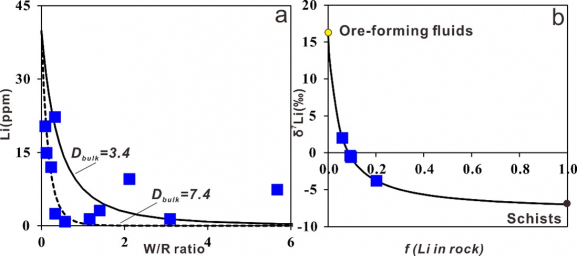 HKU Department of Earth Science
HKU Department of Earth Science
Seminar

A Li-O-Sr-Nd isotopes study on the alteration zones of the Baiyun gold deposit, North China Craton: Implications for the genesis and exploration
-
Date
January 11,2022
-
Time
4:00PM - 4:30PM
-
Venue
JL104
-
Speaker
Mr. LIU Shuaijie (Supervisors: Prof. G.C. Zhao, HKU & Prof. Bin Chen, SUSTech) Department of Earth Sciences, HKU
Traditional studies on alteration zones in orogenic gold deposits generally focus on element gains and losses, which are subject to lithology and alteration type variation. Also, there exists rare quantification of fluid/rock ratios (W/R ratios). Here, we conduct an integrated Li-O-Sr-Nd isotopes study on the alteration zones of the Baiyun gold deposit, North China Craton, to quantify W/R ratios and to illustrate the advantages of Li and its isotopes over other geochemical tools to characterize alteration zones in orogenic gold deposits. The main host rocks at Baiyun are lithologically monotonous schists, supplying us an ideal place to study fluid-rock reactions. The alteration are characterized by K-feldspathization, sericitization, and carbonation. The fluid-rock reactions are important for gold precipitation in decreasing oxygen fugacity, increasing pH of the ore-forming fluids. The potassic metasomatism and the calcic metasomatism determined the increased K2O and decreased Li concentrations, increased CaO and Sr concentrations of the altered rocks relative to the protolith, respectively. The altered rocks have unchanged εNd(t) values, lower (87Sr/86Sr)i ratios, lower δ18O values, and higher δ7Li values relative to the protolith. Nd isotopes prove that two of five host rock samples could best represent the protolith of the altered rocks at Baiyun. Sr and O isotopes of the altered rocks constrain the W/R ratios as 0.1 to 5.7, 0.6 to 5.9, respectively and both suggest relatively small volumes of ore-forming fluids were infiltrated into the alteration zones, which agree with their low grade and less well developed nature. The significantly lower Li concentrations and higher δ7Li values of altered rocks relative to the protolith (0.91—21.83 ppm vs. 39.8 ppm; -3.8—2‰ vs. -7‰) at the Baiyun gold deposit could be explained by a Rayleigh leaching model and a mixing model between ore-forming fluids and protolith, respectively. Li and its isotopes are distinguished by the sensitivity to fluid-rock reactions, the altered zones being always enriched in heavy Li isotopes relative to protolith, inert to meteoric water infiltration, and thus could be robust tools to trace the alteration zones and guide ore exploration in orogenic gold deposits.
Additional information: Mr. LIU Shuaijie, u3006957@connect.hku.hk
